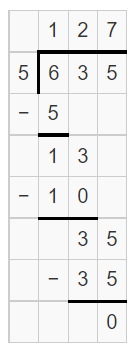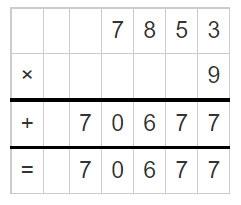Multiplication and Division are arithmetic operations. Both are inverse operations. Multiplication means repeated addition and division means repeated subtraction. Students can know about the facts, detailed process of finding the product, and division of two numbers on this page. You can also check the example questions on division and division in the below-mentioned sections.
What is Multiplication?
Multiplication is one of the arithmetic operations used to multiply different types of numbers. The result obtained after multiplication is called the product. The symbol of multiplication is cross (x) or dot (.) or parenthesis. It means combing equal parts into a group. The parts of multiplication are multiplicand, multiplier, and product. The method to perform the multiplication of two numbers is by repeated addition, long multiplication.
- In multiplication, a number being multiplied is the multiplicand, and the number by which is called the multiplier, and the result is called the product.
- If any number is multiplied by zero gives the product as zero.
- The product of a number and 1 leaves the result as the same number.
- For every multiplication fact, we have two division facts.
- In multiplication operation, the product will be either equal to or greater than the number being multiplied.
- The change in the order of the number being multiplied does not change the product.
More Related Articles:
Division – Definition
The division is also an arithmetic operation that is used to split a group into equal parts. It means the repeated subtraction and it is the inverse operation of multiplication. The symbols used to represent the division are ÷, /. The parts of division are dividend, divisor, remainder, and quotient. The result for the division of two numbers is the quotient. The methods to find to divide two numbers are long division, repeated subtraction, using the number line, short division.
- If a number is divided by 1 gives the same number as the quotient.
- If a number is divided by 0 gives the zero as quotient.
- The product of divisor and quotient added to the remainder is equal to the dividend. (Dividend = (divisor x quotient) + remainder).
- Every division fact has two multiplication facts.
- The divisor and quotient are always factors of the dividend if there is no remainder.
- In division, the remainder is always less than the divisor.
How to Multiply and Divide Numbers?
Find the simple steps to multiply two numbers.
- Write multiplicand, the multiplier in two columns.
- Multiply the unit digit of the multiplier by the multiplicand.
- Multiply the ten’s digit of the multiplier by multiplicand.
- Add those products to get the final result.
Check out the detailed explanation for dividing two numbers easily.
- Write dividend inside the division symbol, divisor outside.
- Get the multiplication table of the divisor.
- Take the first two digits of the dividend and divide it by the divisor
- Subtract it from the dividend.
- Repeat the process until you divide all the numbers of the dividend.
Multiplication and Division Problems with Solutions
Question 1:
Write the multiplication facts for the below-provided division facts.
(i) 56 ÷ 7 = 8
(ii) 109 ÷ 12 = 9
Solution:
(i) Given that,
56 ÷ 7 = 8
7 x 8 = 56
The multiplication facts are 7 x 8 = 56, 8 x 7 = 56.
(ii) Given that,
109 ÷ 12 = 9
The multiplication facts are 12 x 9 = 108 and 9 x 12 = 108
Question 2:
Write two division facts for the following multiplication facts.
(i) 4 x 6 = 24
(ii) 5 x 3 = 15
Solution:
(i) Given that,
4 x 6 = 24
The division facts are 24 ÷ 4 = 6, 24 ÷ 6 = 4
(ii) Given that,
5 x 3 = 15
The division facts are 15 ÷ 3 = 5, 15 ÷ 5 = 3.
Question 3:
Divide the following.
(i) 635 ÷ 5
(ii) 864 ÷ 12
Solution:
(i) Given that,
635 ÷ 5

635 divided by 5 equal to 127 with a remainder of zero/.
So, 635 ÷ 5 = 127
(ii) Given that,
864 ÷ 12

864 divided by 12 equal to 72 with a remainder of 0.
So, 864 ÷ 12 = 72
Question 4:
Solve the following.
(i) 82 x 6
(ii) 786 x 23
Solution:
(i) Given that,
82 x 6

Therefore, 82 x 6 = 70677
(ii) Given that,
786 x 23

Therefore, 786 x 23 = 18078.
